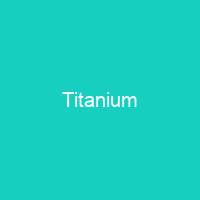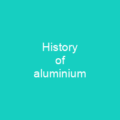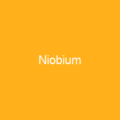Titanium is a chemical element with the symbol Ti and atomic number 22. It is a lustrous transition metal with a silver color, low density, and high strength. Titanium can be alloyed with iron, aluminium, vanadium, and molybdenum to produce strong, lightweight alloys. Titanium dioxide is a popular photocatalyst and is used in the manufacture of white pigments.
About Titanium in brief

Titanium is superconducting when cooled below its critical temperature of 0. 49 K. The two most useful properties of the metal are corrosion resistance and strength-to-density ratio, the highest of any metallic element. In its unalloyed condition, titanium is as strong as some steels, but less dense. Commercially pure grades of titanium have ultimate tensile strength of about 434 MPa, equal to that of common, low-grade steel alloys. Titanium readily reacts with oxygen at 1,200 in air, and at 610 in pure oxygen, forming titanium dioxide. Like aluminium and magnesium, titanium metal and its alloys oxidize immediately upon exposure to air. Like steel structures, those made from titanium have a fatigue limit that guarantees longevity in some applications. Titanium gives excellent resistance to corrosion to platinum with dilute sulfuric acids, chloride, and most organic acids. It also absorbs chlorine and absorbs halogens and absorbs the other halogens. At 800 °C titanium is one of the few elements that burns in pure nitrogen gas, reacting to nitride, which causes nitride to form titanium nitride. At 550 C, titanium is a very reactive metal that burns at lower temperatures than the melting point in normal atmosphere. Melting is possible only in an inert atmosphere in a vacuum or a vacuum. When it first forms, this protective layer is only 1–2 nm but continues to grow slowly; reaching a thickness of 25 nm in four years.
You want to know more about Titanium?
This page is based on the article Titanium published in Wikipedia (as of Dec. 03, 2020) and was automatically summarized using artificial intelligence.







